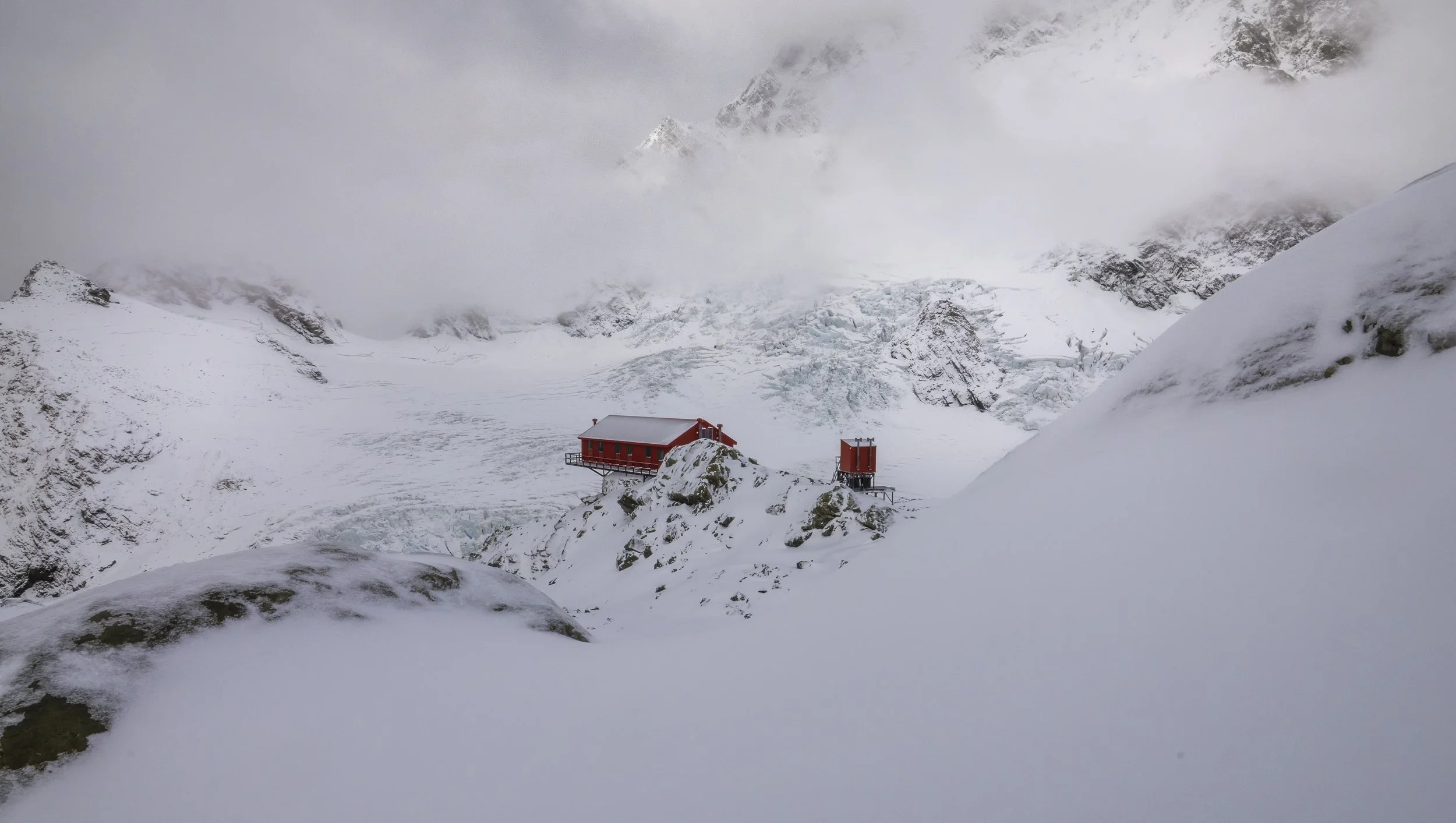Autumn Silence & Blizzard Whispers: A Photography Expedition to Plateau Hut
The Southern Alps don't welcome visitors so much as they test them. From the first thud of the helicopter’s skids against the alpine rock, we knew we were stepping into something far less forgiving than a postcard scene.
It was early autumn. The air above Mount Cook was brittle and thin, the kind that turns breath into smoke and silence into something you can almost hear. Our crew, Scott Buttigieg, Aubrey Lee, Euna Sahng, Matty Haysom, and myself, had lifted off from the valley floor, loaded with camera gear, warm layers, and the kind of optimism that only really surfaces once you’re beyond the reach of phone reception.
The flight in was short and sobering. Glaciers spilled from the peaks like shattered glass. Below us, the moraine was dry, stripped bare by weeks of wind. The usual flat landing zones were gone, scraped clean by the season’s stinginess with snow. Our pilot found a thin patch of stability and dropped us in with surgical precision. It wasn’t graceful, but it worked. The blades spun, the packs were tossed, and then the chopper peeled away, leaving us with nothing but the wind and the groan of distant ice shifting in the heat of the sun.
There’s something final about that moment when the helicopter vanishes and you're left on the ridge, small and irrelevant. No trail, no road, no easy way out. Only time and weather, and what they choose to give you.
At first, the landscape offered little in return. Rock. Ice. Wind. The kind of terrain that dares you to find beauty in its indifference. Then the storm came.






It arrived in the early hours, sneaking in with a low moan that grew into a full-throated howl. By morning, the plateau was buried beneath a metre and a half of fresh snow. Clean. Absolute. Unmapped. We stepped outside and the world had changed.
But beauty like that comes with rules. We weren’t just photographers anymore. We were avalanche forecasters, route finders, risk managers. Every step became a calculation. Avalanche probes in hand, we tested the ground before we moved, poking gently through the powder like archaeologists uncovering some hidden danger.
The snow was waist-deep, slow to navigate and heavy with threat. But it gave us moments that don’t exist in the world below. Light cutting through mist. Peaks swallowed by fog, then revealed in golden clarity. Time stretched out, slowed by the cold and the weight of the moment.
Inside the hut, the mood turned. Warm. Loose. Games of cribbage turned into nightly rituals, played with rules that shifted as quickly as the weather. We ate well, drank better, laughed like people who knew they’d earned it. No one else came. Not until the final night, when a group of novice climbers stumbled through the door, soaked and stunned, trying to process the place they’d just arrived in.
Leaving was hard. Always is. But when the helicopter came back, it did so like it had something to prove. My favorite pilot from Inflight Helicopters brought it in fast, low, and wild. He landed on the edge of the ridge, blades slicing the storm light, and we climbed in as the wind rose again.
We flew out with snow caked to our boots and silence still ringing in our ears.
What stays with me isn’t just the cold, or the beauty, or the perfect photo I managed to frame when the storm finally broke. It’s the balance. The tension between exposure and safety. Solitude and camaraderie. Risk and reward.
Plateau Hut didn’t offer us comfort. It offered clarity. And that, more than anything, is what I came looking for.


